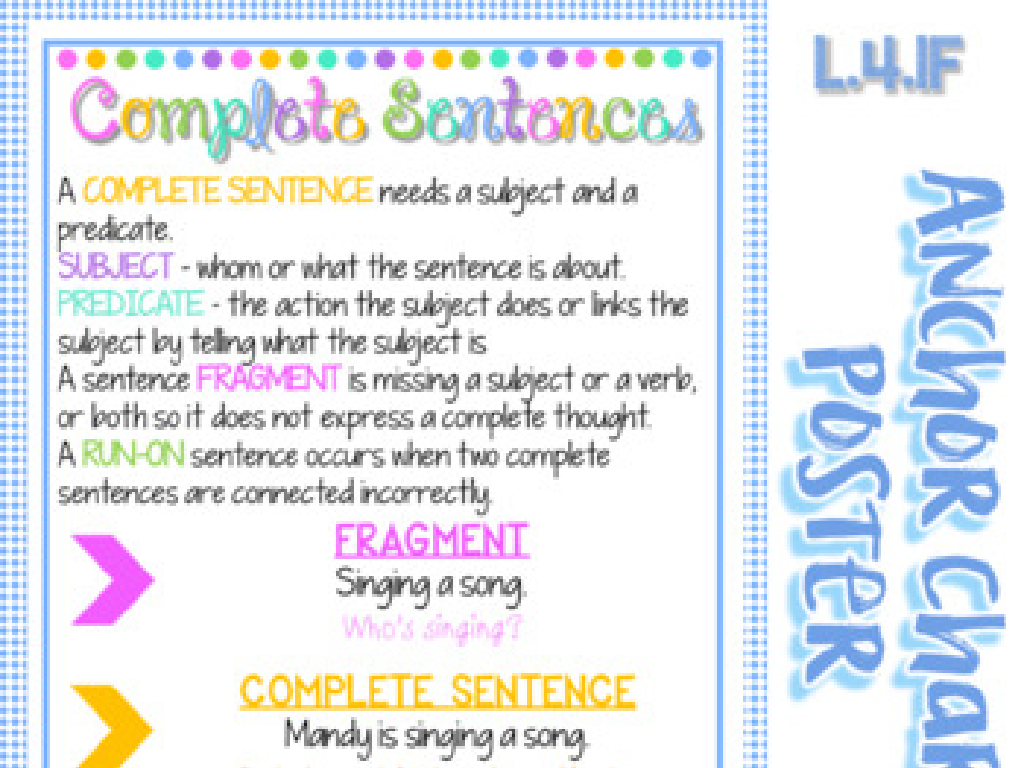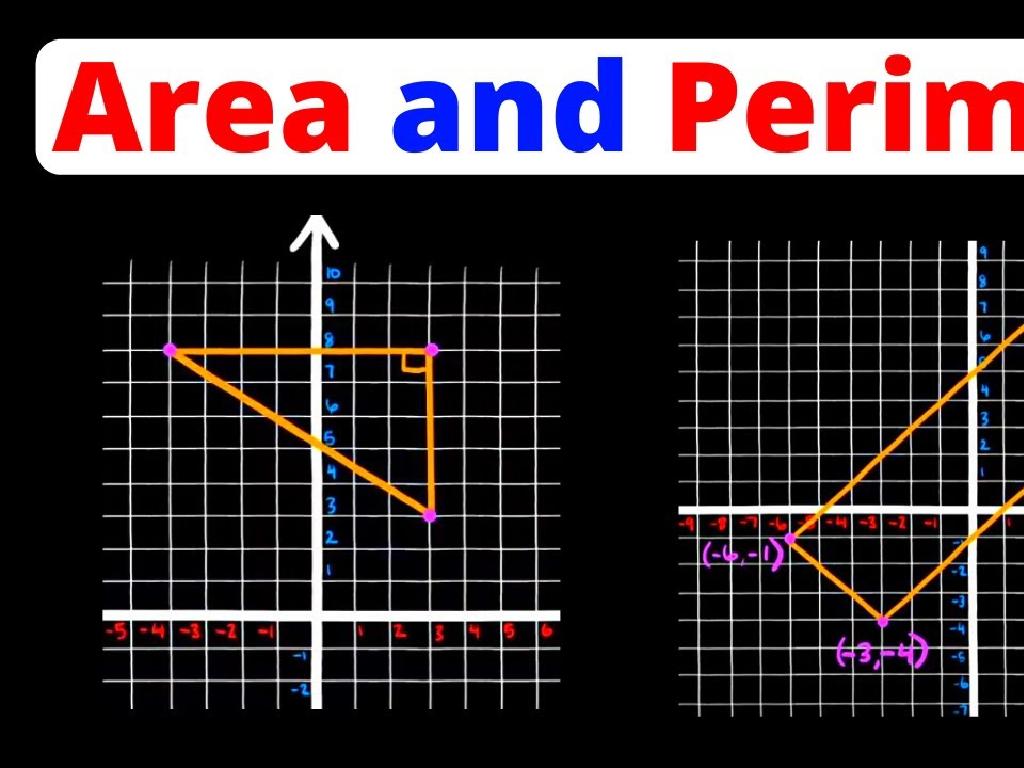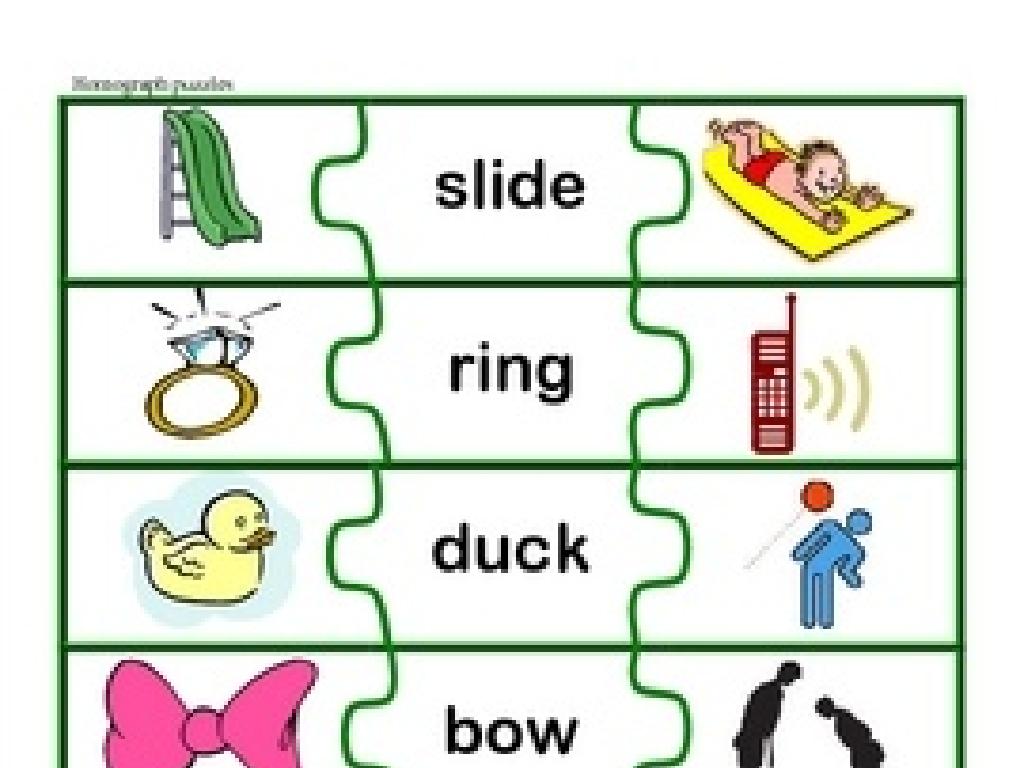Decompose Fractions
Subject: Math
Grade: Fourth grade
Topic: Understand Fraction Addition And Subtraction
Please LOG IN to download the presentation. Access is available to registered users only.
View More Content
Today’s Adventure: Decomposing Fractions!
– Understanding whole vs. part
– A whole is something complete; a part is a piece of the whole.
– Review: What’s a fraction?
– A fraction represents a part of a whole divided into equal parts.
– Decomposing fractions explained
– Breaking down fractions into smaller parts or sums of fractions.
– Practice with examples
– Let’s try decomposing 3/4 into 1/4 + 1/4 + 1/4.
|
Begin the lesson by discussing the concept of whole versus part to ensure a solid understanding of fractions as parts of a whole. Review the definition of a fraction, emphasizing that it represents equal parts of a whole. Introduce the concept of decomposing fractions, which is breaking down a fraction into a sum of smaller fractions. This is a key skill for understanding addition and subtraction of fractions. Provide examples and encourage students to practice decomposing fractions with different numerators and denominators. This will prepare them for more complex operations with fractions.
Decomposing Fractions
– What does ‘decompose’ mean?
– Decompose: Break down into smaller, simpler parts.
– Fractions as puzzles
– Imagine breaking a fraction into smaller fraction pieces, like a puzzle.
– Why decompose fractions?
– It simplifies addition and subtraction of fractions.
– Decomposition aids calculations
– Understanding decomposition helps solve fraction problems more easily.
|
The concept of decomposing fractions is similar to breaking down a whole into smaller parts or pieces. It’s like taking a puzzle and separating it into individual puzzle pieces. This process is crucial for understanding more complex mathematical concepts such as adding and subtracting fractions. By decomposing fractions, students can see how larger fractions are made up of smaller ones, which makes it easier to work with them in calculations. Encourage students to think of fractions as collections of smaller fractions that add up to the whole. Provide examples of decomposed fractions and practice problems to reinforce the concept.
Decomposing Fractions: Breaking Down 3/4
– Understand decomposing fractions
– Example: Break down 3/4
– 3/4 can be split into 1/4 + 1/4 + 1/4
– Each fraction is part of a whole
– Imagine a pie cut into 4 pieces; 3 pieces make up 3/4 of the pie
– Visualize with fraction circles
– Use fraction circles to see the parts that make up 3/4
|
This slide introduces the concept of decomposing fractions, which is a way to break down a fraction into a sum of smaller fractions with the same denominator. The example given is 3/4, which can be decomposed into three parts of 1/4 each. This helps students understand that each part is a portion of the whole. Using visual aids like fraction circles can make this concept more tangible for fourth graders. Encourage students to practice with different fractions and to visualize them with fraction circles or other manipulatives. This foundational skill will aid in their understanding of fraction addition and subtraction.
Your Turn: Decompose 2/3
– Break down the fraction 2/3
– Imagine 2/3 as parts of a pizza
– If a whole pizza has 3 slices, 2/3 would be 2 slices
– What slices represent 2/3?
– Discuss your ideas with the class
|
This slide is an interactive class activity designed to help students understand the concept of decomposing fractions by visualizing them as parts of a whole, such as slices of pizza. Encourage the students to think of the fraction 2/3 and how it can be represented in different ways, for example, as 1/3 + 1/3. Ask them to draw or use physical objects to represent their ideas. Provide guidance on how to break down fractions into smaller, equivalent fractions. During the class discussion, facilitate the sharing of different decompositions and reinforce the understanding that fractions are parts of a whole. Possible activities could include using fraction strips, drawing, or using real-life objects like cut fruits or pizza slices to visualize the decomposition.
Adding Fractions by Decomposition
– Combine parts of fractions
– Example: 1/4 + 1/4 equals 2/4
– Two quarters make a half, which is 2/4
– Use fraction strips for visualization
– Strips or circles show how parts make a whole
– Understand equivalent fractions
– 2/4 is the same as 1/2
|
This slide introduces students to the concept of adding fractions by decomposing them into parts that can be easily combined. Start by explaining that fractions represent parts of a whole and that adding fractions is like combining these parts. Use the example of 1/4 + 1/4 to show that two quarters make a half. Visual aids like fraction strips or circles can help students see how individual parts come together to form a whole or a larger fraction. Highlight that 2/4 is another way of saying 1/2, introducing the idea of equivalent fractions. Encourage students to use visual tools to better understand and solve fraction addition problems.
Subtracting Fractions by Decomposition
– Understanding fraction subtraction
– Example: Subtract 1/4 from 3/4
– Start with 3/4, take away 1/4, and you’re left with 2/4
– Visualize removing parts
– Imagine cutting a pie into 4 pieces and removing 1 piece
– Simplify the result
– 2/4 simplifies to 1/2 because both numerator and denominator can be divided by 2
|
This slide introduces the concept of subtracting fractions by decomposition, which is a part of understanding fraction addition and subtraction. Begin by explaining that subtracting fractions involves removing parts from a whole. Use the example 3/4 – 1/4 to show that when you take 1/4 away from 3/4, you are left with 2/4. Encourage students to visualize the process by using pie charts or other visual aids to see the parts being taken away. Emphasize the importance of simplifying fractions to their lowest terms, in this case, showing that 2/4 can be simplified to 1/2. This visual and hands-on approach helps solidify the concept for fourth graders.
Class Activity: Fraction Puzzles
– Create your own fraction puzzles
– Use paper strips for fractions
– Cut strips to represent fractions and decompose them into smaller parts
– Work in pairs to solve puzzles
– Partner up and exchange puzzles to challenge each other
– Discuss puzzle solutions together
– Share how you solved the puzzles and what you learned
|
This activity is designed to help students understand the concept of decomposing fractions in a fun and interactive way. By creating and solving fraction puzzles with paper strips, students will visually and physically break down fractions into smaller parts and then recombine them to form new fractions. This hands-on experience reinforces their understanding of fraction addition and subtraction. Teachers should monitor the pairs to ensure collaboration and provide guidance as needed. Possible variations of the activity could include using different colored paper strips for different fractions, timing the activity for a friendly competition, or having students create word problems based on their puzzles.
Great Work on Fractions!
– Excellent effort in decomposing!
– Recall: Fractions are parts of a whole
– Homework: Practice decomposing
– Break down given fractions into smaller parts
– Add/Subtract fractions on worksheet
– Use the skills learned to solve problems
|
Congratulations to the students for their hard work in learning to decompose fractions. It’s crucial to reinforce the concept that fractions represent parts of a whole and can be broken down into smaller, more manageable parts. For homework, students are tasked with applying their knowledge to decompose and then add or subtract fractions using the worksheets provided. This practice will help solidify their understanding and prepare them for more complex fraction operations. Encourage students to approach each problem step-by-step and to check their work for accuracy.





